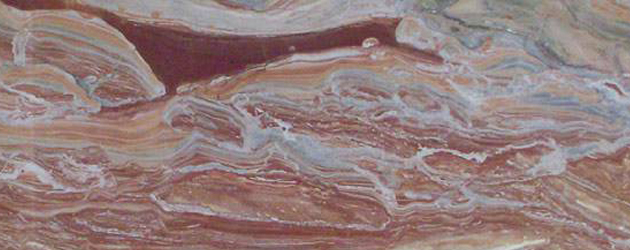RED OROBIC ARABESQUE

Orobic Arabesque is one of the world’s most historic and peculiar stones, mined for more than a hundred years for its inimitable colors and its unique natural patterns, which earned it the name “arabesque” to mark the lively and sinuous decorations that bring to mind Islamic art. Four types of it are marketed: red orobic arabesque, grey orobic arabesque, pink orobic arabesque and pink-grey orobic arabesque.
More than 90% of the rock is made up of calcium carbonate (CaCO3) and clay minerals;
the patterns are created by different color plates which range from red to orange-pink, light pink, white, light grey and dark grey.
Orobic Arabesque is a sedimentary rock, a veined or laminated limestone, and belongs to the formation called “Membro del Calcare Rosso”. Its origin goes back to the upper Ladinian, 225 million years ago. It’s made of sediments from shallow seas, the summit of a carbonatic platform subject to periodic emergences, breaks, dolomitization and karstification: similar conditions to those we find today in the Bahamas, when in the Bergamo area the climate was tropical, with lagoons and coral reefs, limestone cliffs, white beaches and a clear, shallow and warm sea.
The sharp fluctuations in sea level led to emersion periods (which could even last thousands of years) which formed desiccation structures, accumulations of algae and volcanic ash, and immersion periods that broke, rebuilt and re-solidified the material.
The effects of these climatic and environmental phenomena are visible today, millions of years later, in the great variety of colors and geometric shapes of this stone.

